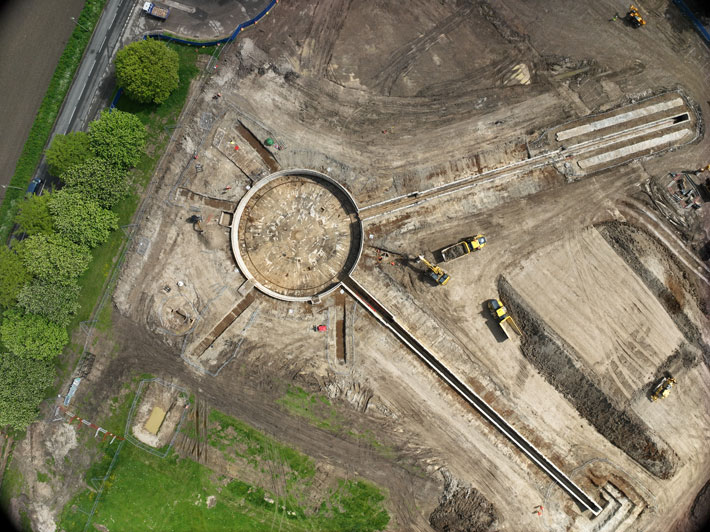 OXFORDSHIRE, ENGLAND—Live Science reports that an experimental catapult intended to launch World War II bomber planes has been uncovered in southeastern England by researchers from the Museum of London Archaeology (MOLA). The structure, built between 1928 and 1940, was designed to get planes into the air with shorter runways and less fuel. Although the device was never used, it was a precursor to the 1941 catapult system that was used to launch warplanes from ships. The prototype catapult consisted of a circular pit measuring nearly 100 feet in diameter topped with a turntable. The turntable could position an aircraft so that it was facing one of two concrete track runways, which each measured 269 feet long. A towing hook would then attach the plane to an underground pneumatic ram powered by 12 Rolls-Royce Kestrel aeroengines. The researchers explained that high-pressured air was then forced into the pneumatic ram, which rapidly expanded to the length of the guided track to propel the large bombers into the sky. However, the catapult was not a good fit for the planes, and never worked properly. Another runway with runway lights and a previously unknown gun emplacement were also uncovered at the site. To read about another World War II–era feature discovered in England, go to "The Marks of Time: WWII Air Raid Shelter."
OXFORDSHIRE, ENGLAND—Live Science reports that an experimental catapult intended to launch World War II bomber planes has been uncovered in southeastern England by researchers from the Museum of London Archaeology (MOLA). The structure, built between 1928 and 1940, was designed to get planes into the air with shorter runways and less fuel. Although the device was never used, it was a precursor to the 1941 catapult system that was used to launch warplanes from ships. The prototype catapult consisted of a circular pit measuring nearly 100 feet in diameter topped with a turntable. The turntable could position an aircraft so that it was facing one of two concrete track runways, which each measured 269 feet long. A towing hook would then attach the plane to an underground pneumatic ram powered by 12 Rolls-Royce Kestrel aeroengines. The researchers explained that high-pressured air was then forced into the pneumatic ram, which rapidly expanded to the length of the guided track to propel the large bombers into the sky. However, the catapult was not a good fit for the planes, and never worked properly. Another runway with runway lights and a previously unknown gun emplacement were also uncovered at the site. To read about another World War II–era feature discovered in England, go to "The Marks of Time: WWII Air Raid Shelter."
Experimental World War II Catapult Unearthed in England
